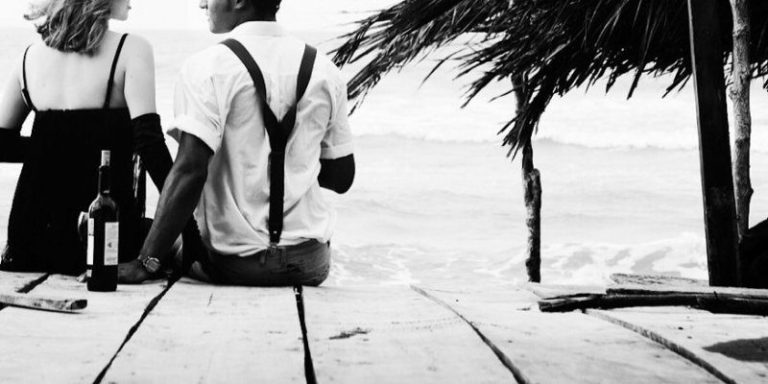Digital Dating: Sparking Connections and Ghostly Rejections
The world of dating is undergoing a transformation like never before with the advancement of technology. Modern romance now faces opportunities and challenges thanks to the growth of online dating sites and mobile dating apps (MDAs). The puzzling act of ghosting, a digital-age rejection that leaves one in the dark dealing with its aftermath, is one phenomenon that has drawn more and more attention.
According to researchers (Freedman et al., 2019; LeFebvre et al., 2019), the act of “ghosting” involves abruptly cutting off communication and ignoring the other person’s attempts to reconnect. The very channels that once encouraged connection are frequently used to facilitate this estrangement. Ghosting cannot be said to be entirely new, but the digital age’s prevalence has given it new meanings and implications.
The Act of Ghosting
Traditional relationship literature identifies withdrawal and avoidance as typical breakup tactics. Ghosting may appear to be an expansion of these strategies in this situation. However, this strategy’s popularity has been increased by how simple it is to use in the context of digital communication. With the potential for interactions outside of one’s social circle, mobile dating apps offer many opportunities for connections to end as quickly as they began.
The anonymity offered by digital communication is a major factor in how ghosting is made possible. In the world of online dating, actions that would be considered rude in face-to-face interactions are tolerated. As a result, users may experience superficial interactions and unanswered messages, which can demoralize and frustrate a lot of people. With the emphasis on appearances and the gamification of mobile dating, connections are frequently brief, and quantity is valued over quality. In this situation, ghosting appears to be a practical way to avoid the pressures of confrontation.
Ghostly Effects
Ghosting has effects that go beyond the one-time interaction. Those who have been ghosted claim that it has a negative impact on their confidence in themselves and other people. This is consistent with psychological research showing that self-esteem can drop as a result of rejection. Due to lower levels of natural “painkillers” in the brain, people with lower self-esteem may find the experience of ghosting to be even more painful and take longer to recover. However, some coping strategies, like rationalizing ghosting as the norm on dating apps, can lessen the blow to one’s self-esteem.
Presence of Closure
In addition, the presence or absence of closure is crucial in determining how the effects of ghosting turn out. When there is a lack of clear communication, people struggle with uncertainty and resort to coping mechanisms. These can include everything from turning to social media for comfort to decreasing expectations for upcoming interactions. It’s interesting to note that some ghosters claim that they are acting in self-defence and that their behaviour is a reaction to the other party’s aggressive pursuit. This implies a reciprocal relationship between aggressive behaviour and ghosting.
Online Dating Activity
Online dating activity is also higher among anxiously attached (i.e., individuals who have the type of attachment style rooted in a fear of abandonment and insecurity of being underappreciated) and rejection-sensitive individuals (i.e., individuals who feel intense emotional pain related to rejection), who are more likely to act hostilely when rejected. This connection may help to explain why ghosting seems to be more common in online dating settings. It brings up fascinating issues regarding how personality traits and the dynamics of online relationships interact.
Ghosters vs Ghostees
In conclusion, there is excitement and uncertainty surrounding the world of online dating. Ghosting, a behaviour made more common by technological communication, is a complex interaction between an individual’s personality and the opportunities provided by digital platforms. Understanding the psychological and social roots of ghosting can help both ghosters and ghostees navigate the world of digital connections with empathy and resilience as we navigate this era of digital sparkling connections.
If you think that you can benefit from professional support on this issue you can reach out here.
Seray Soyman is working as a Clinical Psychosexologist within the Willingness team, providing psychosexual education and sexual support sessions, as well as delivering training and workshops. She has a master’s degree in Clinical Psychosexology from the Sapienza University of Rome. Seray’s research interests are sexual communication, sex-positive behaviour, LGBTQIA+ studies, and sexual health.
References
Freedman, G., Powell, D. N., Le, B., & Williams, K. D. (2019). Ghosting and destiny: Implicit theories of relationships predict beliefs about ghosting. Journal of Social and Personal Relationships, 36, 905–924.
LeFebvre, L. E., Allen, M., Rasner, R. D., Garstad, S., Wilms, A., & Parrish, C. (2019). Ghosting in emerging adults’ romantic relationships: The digital dissolution disappearance strategy. Imagination, Cognition and Personality, 39, 125–150.
Timmermans, E., Hermans, A. M., & Opree, S. J. (2021). Gone with the wind: Exploring mobile daters’ ghosting experiences. Journal of Social and Personal Relationships, 38(2), 783–801.







